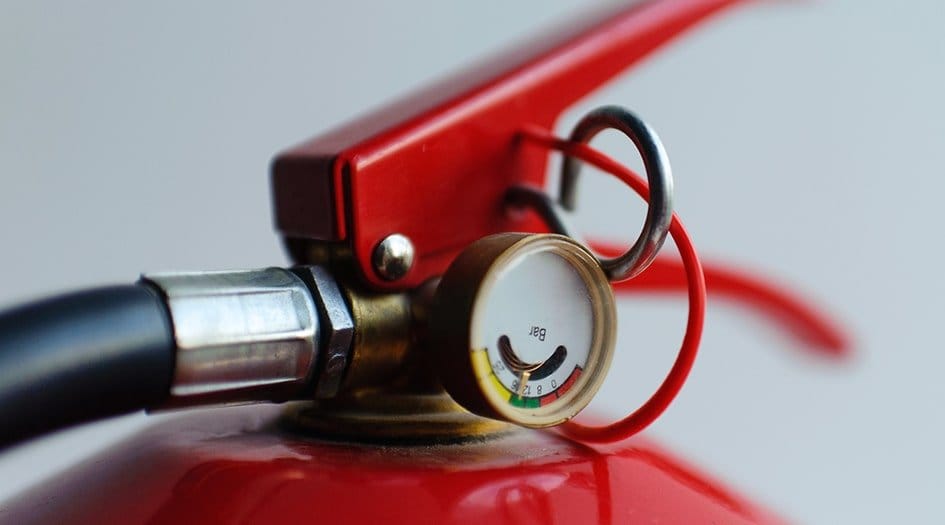Fire Extinguishers
Supplying and filling all types and sizes of fire extinguishers
Fire Extinguisher:
A metal cylinder filled with water or chemicals used to put out fires. This extinguisher is portable and easy to operate, and is mainly used to put out small fires before the flames spread.
Before starting to know the types of extinguishers, it is necessary to know the types of fires to use the appropriate extinguisher for them
Types of fires:
Firefighting experts divide fires into four categories A, B, C, D, and E (A-B-C-D-K) depending on the flammable substance.
A-A Solid fires: Class A fires that include fabric, paper, wood, and certain types of plastic.
B-B Flammable material fires: It belongs to category B, and includes flammable materials and liquids such as gas, petroleum oils and alcohol.
C-C Fires of electrical materials: Class C, and includes fires affecting household appliances and electrical transformers.
D-D Heavy Metal Fires: Class D fires, which include flammable heavy metals such as: manganese, aluminum, titanium and other metals.
K-e Vegetable fires: They are category E fires, and they include forest fires, trees, cooking oil, and animal fats.
Most fire extinguishers are marked with the category or categories in which they can be used.
Available types of fire extinguishers:
CO2 extinguisher: It is used with all types of fires, except for metal fires, where it is not considered suitable for them.
Powder extinguisher: It is used to extinguish most types of fires, and it is the best extinguisher for extinguishing electrical appliance fires.
Water extinguisher: It is used to extinguish fires of solid materials, such as wood, paper and cloth fires.
Foam extinguisher: Best for extinguishing flammable liquid fires, such as petroleum liquids and dyes.
How to use the fire extinguisher :
Carry the extinguisher by the carrying handle only.
Remove the safety bolt on the handle neck.
Point the fire extinguisher directly at the flames.
Continuing to direct the extinguishing material towards the flames, taking care to avoid lifting the hand from the operating lever until the flames are completely extinguished, or until the fire truck arrives
Fire Extinguishers
Supplying and filling all types and sizes of fire extinguishers
Fire Extinguisher:
A metal cylinder filled with water or chemicals used to put out fires. This extinguisher is portable and easy to operate, and is mainly used to put out small fires before the flames spread.
Before starting to know the types of extinguishers, it is necessary to know the types of fires to use the appropriate extinguisher for them
Types of fires:
Firefighting experts divide fires into four categories A, B, C, D, and E (A-B-C-D-K) depending on the flammable substance.
A-A Solid fires: Class A fires that include fabric, paper, wood, and certain types of plastic.
B-B Flammable material fires: It belongs to category B, and includes flammable materials and liquids such as gas, petroleum oils and alcohol.
C-C Fires of electrical materials: Class C, and includes fires affecting household appliances and electrical transformers.
D-D Heavy Metal Fires: Class D fires, which include flammable heavy metals such as: manganese, aluminum, titanium and other metals.
K-e Vegetable fires: They are category E fires, and they include forest fires, trees, cooking oil, and animal fats.
Most fire extinguishers are marked with the category or categories in which they can be used.
Available types of fire extinguishers:
CO2 extinguisher: It is used with all types of fires, except for metal fires, where it is not considered suitable for them.
Powder extinguisher: It is used to extinguish most types of fires, and it is the best extinguisher for extinguishing electrical appliance fires.
Water extinguisher: It is used to extinguish fires of solid materials, such as wood, paper and cloth fires.
Foam extinguisher: Best for extinguishing flammable liquid fires, such as petroleum liquids and dyes.
How to use the fire extinguisher :
Carry the extinguisher by the carrying handle only.
Remove the safety bolt on the handle neck.
Point the fire extinguisher directly at the flames.
Continuing to direct the extinguishing material towards the flames, taking care to avoid lifting the hand from the operating lever until the flames are completely extinguished, or until the fire truck arrives



